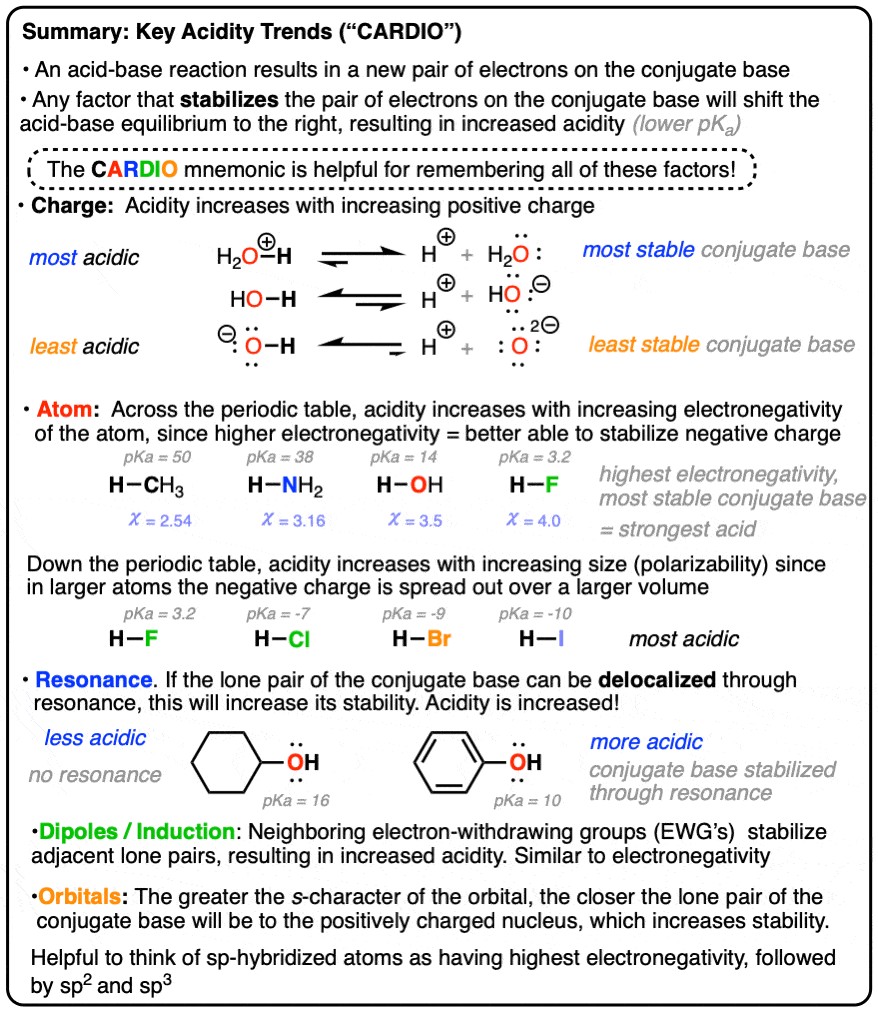Understanding acidity is crucial in chemistry. Whether you’re a student preparing for an exam or a researcher working in a lab, knowing how to compare the acidity of different molecules is a fundamental skill. This article will break down the five key factors that influence acidity and provide you with a comprehensive guide on How To Compare Acidity effectively.
Acidity refers to the tendency of a molecule to donate a proton (H+). A stronger acid donates protons more readily than a weaker acid. The strength of an acid is quantified by its pKa value, where lower pKa values indicate stronger acids. Just as knowing the value of poker hands is essential in a card game, understanding pKa is paramount in chemistry. A strong acid will have a weak conjugate base, meaning the species formed after the acid donates its proton is less likely to accept a proton back.
1. Charge: The Foundation of Acidity
The most fundamental factor influencing acidity is charge. Removing a proton (H+) reduces the formal charge on a molecule. Consequently, a positively charged species will more readily donate a proton to become neutral. The more positive the charge, the stronger the acid. For example, H3O+ (with a +1 charge) is a stronger acid than H2O (neutral), which in turn is stronger than HO- (with a -1 charge).
2. Atom: Electronegativity and Size Matter
Acidity increases across a row in the periodic table as electronegativity increases. Fluorine (F) is more electronegative than oxygen (O), nitrogen (N), and carbon (C), making HF more acidic than H2O, NH3, and CH4, respectively. However, acidity decreases down a column. While fluorine is more electronegative than chlorine (Cl), HF is a weaker acid than HCl. This is due to the smaller size of the fluoride ion (F-), concentrating the negative charge and making it less stable compared to the larger chloride ion (Cl-).
3. Resonance: Stabilizing the Conjugate Base
Resonance significantly stabilizes a conjugate base by delocalizing the negative charge across multiple atoms. This delocalization makes the conjugate base less likely to accept a proton back, thus increasing the acidity of the parent molecule. Phenol (C6H5OH) and acetic acid (CH3COOH) are classic examples of molecules whose conjugate bases benefit from resonance stabilization, making them more acidic than their non-resonance stabilized counterparts.
4. Inductive Effects: Electron Withdrawal Through Bonds
Electronegative atoms can withdraw electron density through sigma bonds, an effect known as induction. This inductive effect stabilizes a negative charge on the conjugate base, increasing acidity. The strength of this effect depends on the electronegativity of the withdrawing group and its proximity to the acidic proton. The closer and more electronegative the withdrawing group, the stronger the inductive effect and the greater the acidity.
5. Orbitals: Hybridization and Acidity
The type of orbital housing the lone pair in the conjugate base also plays a role in acidity. Orbitals with more s-character hold electrons closer to the nucleus, stabilizing the negative charge. Therefore, sp hybridized carbons (alkynes) are more acidic than sp2 hybridized carbons (alkenes), which are in turn more acidic than sp3 hybridized carbons (alkanes). This difference in acidity is substantial, spanning orders of magnitude.
Conclusion: A Holistic Approach to Comparing Acidity
Comparing acidity requires a comprehensive understanding of these five factors: Charge, Atom, Resonance, Dipole Induction, and Orbitals (CARDIO). By carefully considering each factor, you can accurately predict and compare the acidity of various molecules. Remembering these key factors will empower you to tackle acidity problems with confidence.
